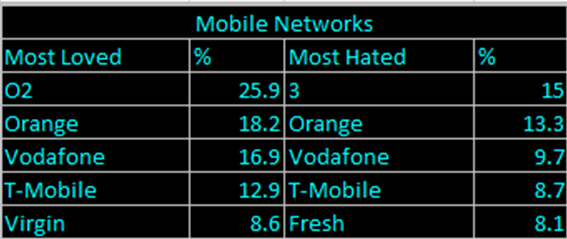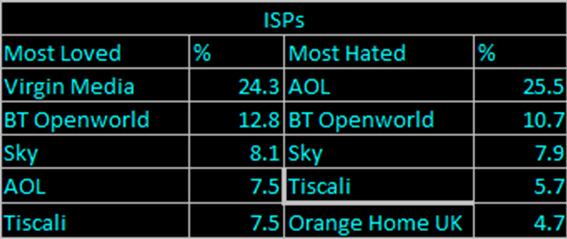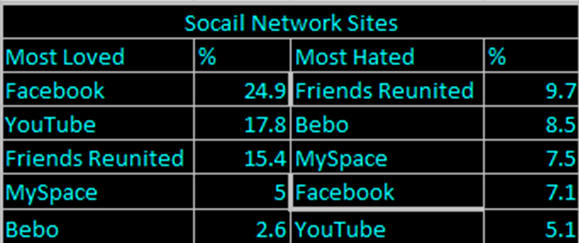I was reading Marketing’s fourth annual survey into the top loved and hated brands and noticed the fickle nature of the public in their views on brands, and undoubtedly linked, their advertising campaigns. What struck me from the survey, more than the strange appearance of AOL at number 2 in the top 50 hated brands even though their UK profile doesn’t warrant such a high profile spot, was the number of brands named highly in both the most hated, and most loved lists. In the main list you actually only have two brands appearing in the top 20 of both, these are The Sun and Nokia (via ngage in the most hated), but if you get down into the different tables for the individual markets it is much more apparent. I suppose you could just argue that the more you drill down by market, the less brands their are and so the more chance of a brand appearing in both lists but if you take such a broad market as “fashion” you would imagine there are enough brands out there to limit duplication. But yet in this particular category 3 brands appear in the top 5 for both hated and loved! Topshop is number one hated and number 5 loved, Levi’s is number two loved and number 4 hated, and Next is number one loved and number 3 hated. How can brands be perceived in such a different way? Is it simply that such well known and high profile brands are more likely to stir an extreme emotion in users where as slightly lesser brands stay under the radar a little more? Your guess is as good as mine. I have listed some of the other occurences of this below, focussing on the digital areas of the survey (as that is the topic of the blog after all!):



